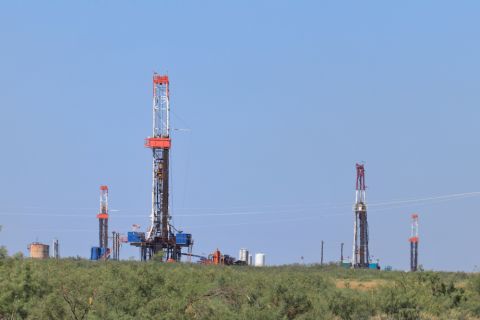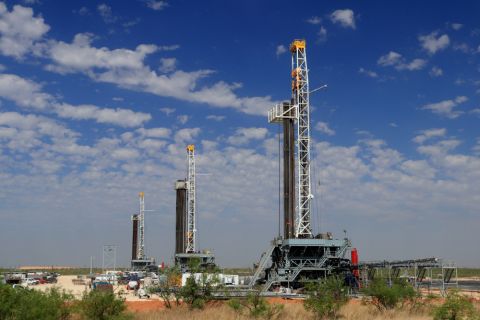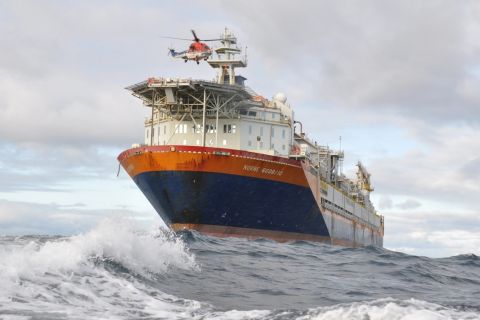Tom Price, here it is. The senior vice president, investor and government relations, at Chesapeake Energy Corp. has (pleasantly) noted on several occasions that it may be time to update a May 2000 A&D Watch newsletter article on the company. The story was titled "Why CHK Can't Get Up." In early 2000, the company's stock price had fallen to about $2 after its Austin Chalk gas holdings proved to be very short-lived. The stock had been more than $30 in 1997. Chesapeake's was the right story-U.S. natural gas-but a bit too early and not founded upon one of America's most enduring plays. Today, shares are more than $30 again-15 times that of six years ago. The company's market cap is $12.2 billion and its enterprise value is $15.7 billion, according to Morgan Stanley. Much has gone up at Chesapeake since early 2000-proved reserves, stock price, Wall Street favor-and the length of the company's press releases! The latest one had a 90-word headline. The body was 4,650 words, including seven tables. PR Newswire should love the account, since it charges by the word. The press and analysts certainly enjoy the highly detailed reports. What's Chesapeake's 2007 estimated book tax rate? Its open swap positions as a percent of estimated total 2008 gas production? It's all there. What isn't plainly in there could be Chesapeake's most important story ever-how it ranks these days among U.S. gas reserve-holders. With recent acquisitions, its pro forma September 30, 2005, proved reserves totaled 7.6 trillion cubic feet equivalent (91% gas), ranking it among the Top 10 U.S. reserve-holders, based on John S. Herold Inc.'s figures for year-end 2004 U.S. holdings. In terms of natural gas holdings, the company is likely to rank No. 4 once all reserve-holders' year-end figures are released, and another big gainer, XTO Energy Inc., may be right in there too. Chesapeake and XTO could be just behind the likes of BP, ExxonMobil and ConocoPhillips-Burlington, and possibly ahead of Anadarko Petroleum and Devon Energy in U.S. gas-holdings. How did Chesapeake get there? Some would say it has bought its way to the top. While buying has been a large part of the Chesapeake story, the company regularly notes that it has grown its reserves by the drillbit too. In 2004, for example, it bought 190 million barrels of oil equivalent, and it found 160 million, according to Herold. Companies that Chesapeake has catapulted ahead of in U.S. gas reserves include Royal Dutch Shell, Chevron (including Unocal), The Williams Cos., Kerr-McGee Corp., EnCana Corp. and Dominion Resources. The fiscal profile make-over is remarkable. In early 2000, the company had $970 million of debt and $207 million of preferred-share obligations. Its proved reserves totaled 1.2 trillion cubic feet equivalent. By that day's standards, its assets were worth about $1.2 billion. Today, they would fetch some $3.6 billion-if Chesapeake was the buyer (grin)-yet other companies are ponying up some $3 per proved thousand cubic feet equivalent these days too. "Whoever is buying the stock today doesn't know how to read a 10-K," one analyst said in early 2000. Lucky for Joe Stock-Picker if he never did learn how to, and is still holding the stock. Chesapeake didn't have much choice but to dig out from the $2 stock price. Its debt could not be refinanced, and its preferred-share terms were unattractive to a takeover bidder. "The only way these guys could get capital again is in a frenzied market...All they can do is hold their own," the analyst said. "How do you grow a company when you can't take on any debt?" Aubrey McClendon, chairman and chief executive, and team figured that out-stick to its U.S. gas story and buy, hedge, drill, buy, hedge, drill. Repeat many, many times. For now, the market has caught up to what McClendon and team have believed in for years-strong natural gas prices.
Recommended Reading
Petrobras Not in a Race with Guyana to Boost Production, CEO Says
2024-05-14 - While Brazil and Guyana aren’t necessarily competing to see which country can produce more oil, Petrobras’ CEO Jean Paul Prates jokingly said Brazil was winning, while adding that Bolivia’s falling production was an opportunity for Argentina.
E&P Highlights: May 13, 2024
2024-05-13 - Here’s a roundup of the latest E&P headlines, with a couple fields coming online, as well as new contract awards.
New Permian Math: Vital Energy and 42 Horseshoe Wells
2024-05-10 - Vital Energy anticipates making 42 double-long, horseshoe-shaped wells where straight lines would have made 84 wells. The estimated savings: $140 million.
SM Energy Targets Prolific Dean in New Northern Midland Play
2024-05-09 - KeyBanc Capital Markets reports SM Energy’s wells “measure up well to anything being drilled in the Midland Basin by anybody today.”
Vår Selling Norne Assets to DNO
2024-05-08 - In exchange for Vår’s producing assets in the Norwegian Sea, DNO is paying $51 million and transferring to Vår its 22.6% interest in the Ringhorne East unit in the North Sea.





